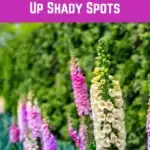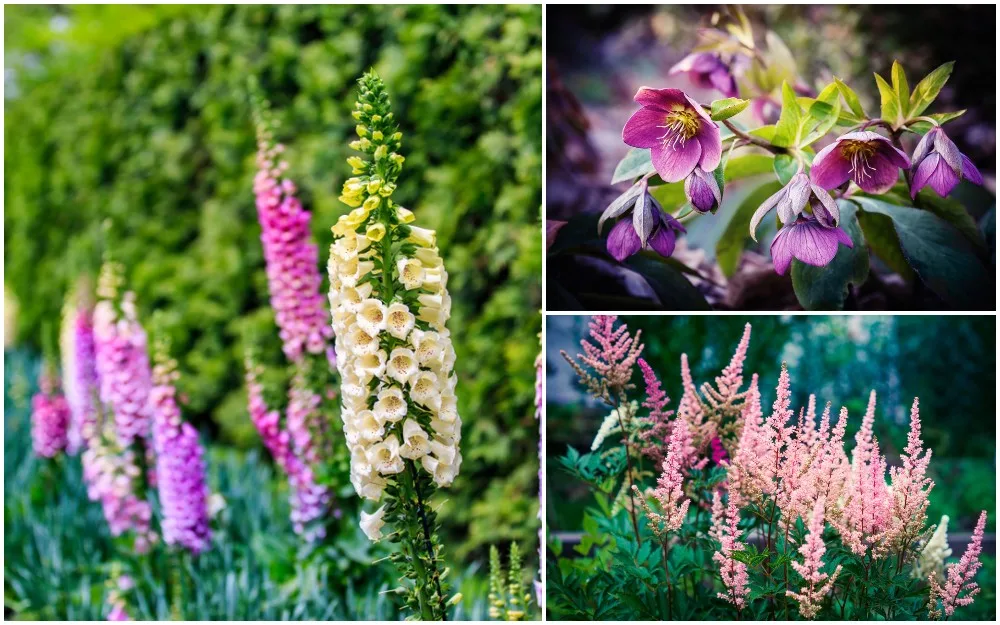
Shade loving plants are adapted to very little sunlight because of their place in the forest understory.
Since the canopies of larger trees and shrubs block as much as 95% of the sunlight that reaches the forest floor, understory plants have evolved to utilize the very little light they do receive to photosynthesize and reproduce.
It’s a similar story in the garden, where trees, buildings, fences, and other structures create shady spots where it seems like nothing will grow.
But there is a lot of choice when it comes to low light plants that are just as unique and beautiful as their sunny counterparts.
Before planting up your shaded spots, it’s important to take some time to observe the shade conditions in your particular locale.
Types of Garden Shade
Almost all gardens and backyards will be shaded at some point during the daylight hours but there are a number of factors that affect the amount and quality of the shaded parts.
The orientation of your home and garden is an important consideration, as southern exposures will be sun filled most of the day while western exposures will be shaded in the morning but be full of light by the afternoon.
Depending on the structures in and around your garden, the quality of shade will vary. There are three main types of shade to consider when choosing plants to grow:
Partial shade is defined as a spot that receives sunlight for only part of the day – between 3 to 6 hours each day.
Dappled shade is typically found in areas where the branches and leaves of deciduous trees block out some, but not all, of the sunlight. Plants in dappled shade usually receive the equivalent of about 3 hours of sun per day.
Full shade is a site that receives practically no sunlight. It is common underneath conifer trees or where a northern wall or structure blocks all light for the entire day.
Flowering Plants For Shade
These beauties don’t need much – or any – direct sunlight to add some cheer to your darkened nooks and crannies:
1. Bigleaf Hydrangea (Hydrangea macrophylla)
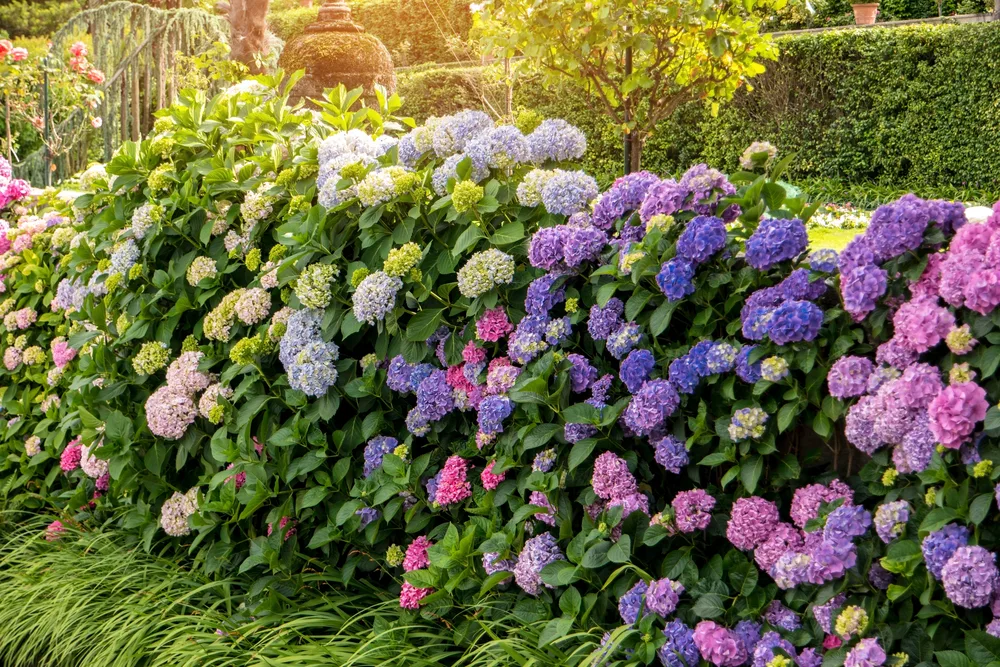
With around 75 species within the genus, bigleaf hydrangea is one of the most widely grown in the home garden.
A deciduous shrub with huge flower clusters that range in color from purple to blue to pink, depending on the whether the soil pH is acidic or basic, bigleaf hydrangea is a showy specimen that thrives in darkened spots.
Hardiness zone: 5 to 11
Sun exposure: Part shade to full shade
2. Spotted Dead Nettle (Lamium maculatum)
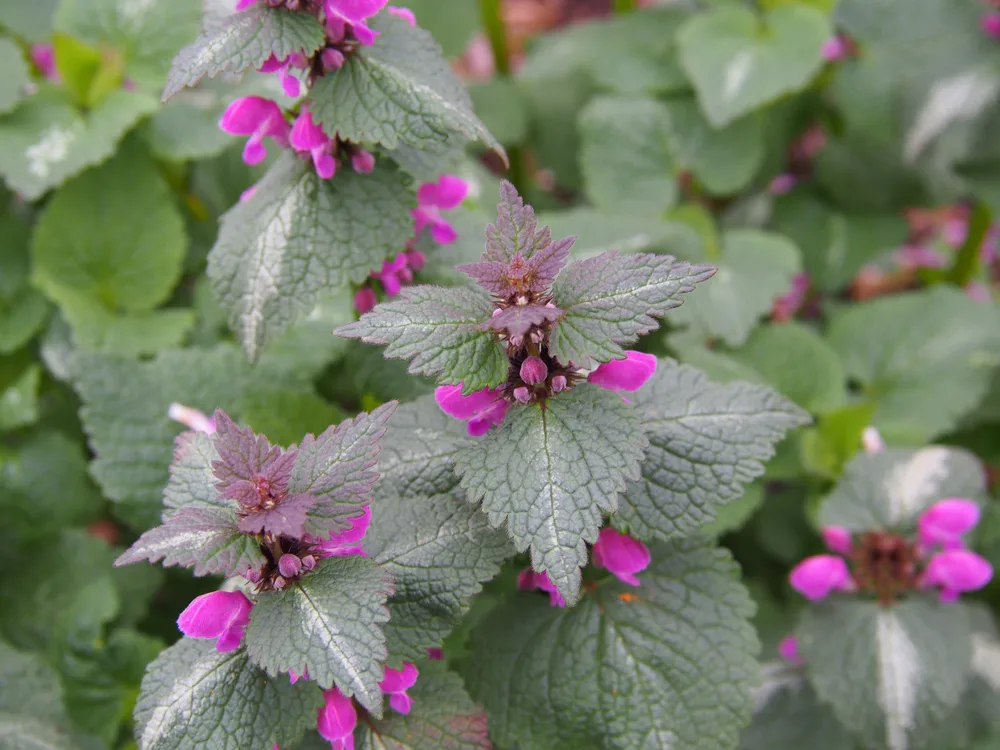
A mat-forming, low growing perennial, spotted dead nettle is best reserved for the darkest and dampest areas of the garden.
With about a dozen spotted dead nettle cultivars to choose from, most have heart-shaped silvery leaves tinged in green along the edge and bloom in spikes of light pink to deep purple flowers that are reminiscent of snapdragons.
Hardiness zone: 3 to 8
Sun exposure: Part shade to full shade
3. Astilbe (Astilbe spp.)
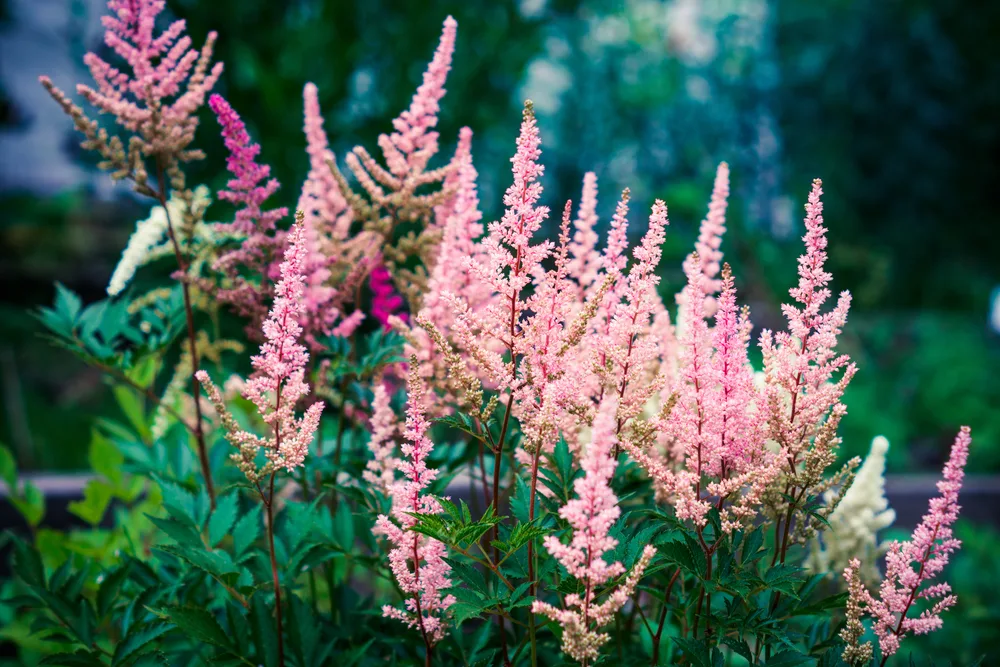
A pretty little number that loves a good shadowy spot, astilbe is a clump forming plant with feathery, graceful foliage.
In late summer, astilbe sends out tall spikes of tiny flowers that form gorgeous arching panicles that range in color from white, peach, pink, and deep red, depending on the cultivar.
Hardiness zone: 4 to 8
Sun exposure: Part shade to full shade
4. Foxglove (Digitalis purpurea)
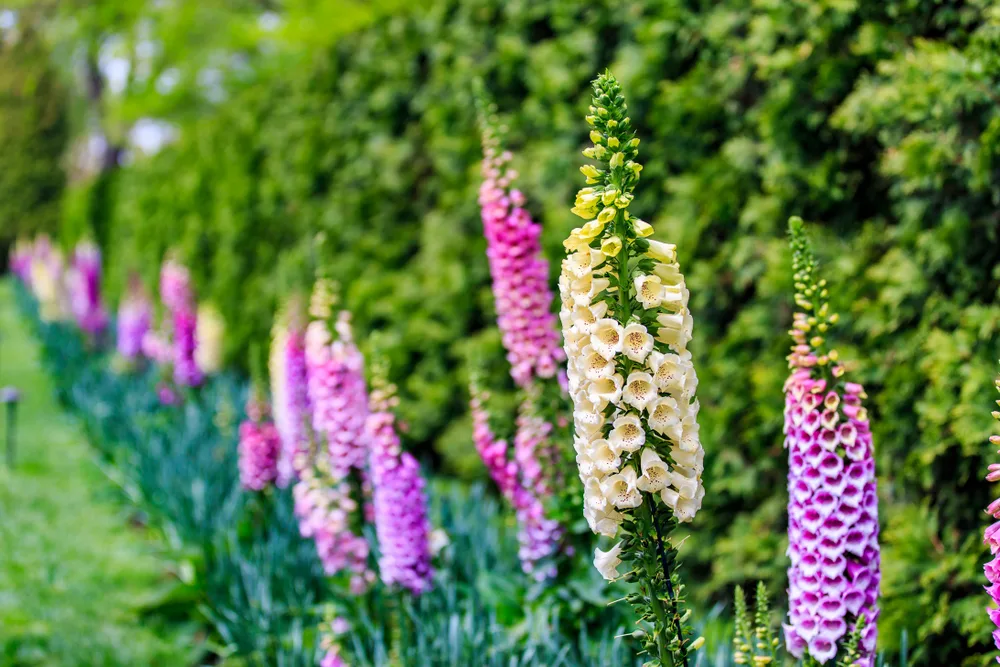
Foxglove blooms early in the season with tall floral spikes adorned with densely packed tubular flowers in white, pink, or purple.
Although foxglove is technically a biennial that flowers in its second year, it will self seed each season to form colonies with staggered bloom times.
Allow some of the plants to go to seed so you can enjoy them year after year.
Hardiness zone: 4 to 8
Sun exposure: Full sun to part shade
5. Hellebore (Helleborus orientalis)
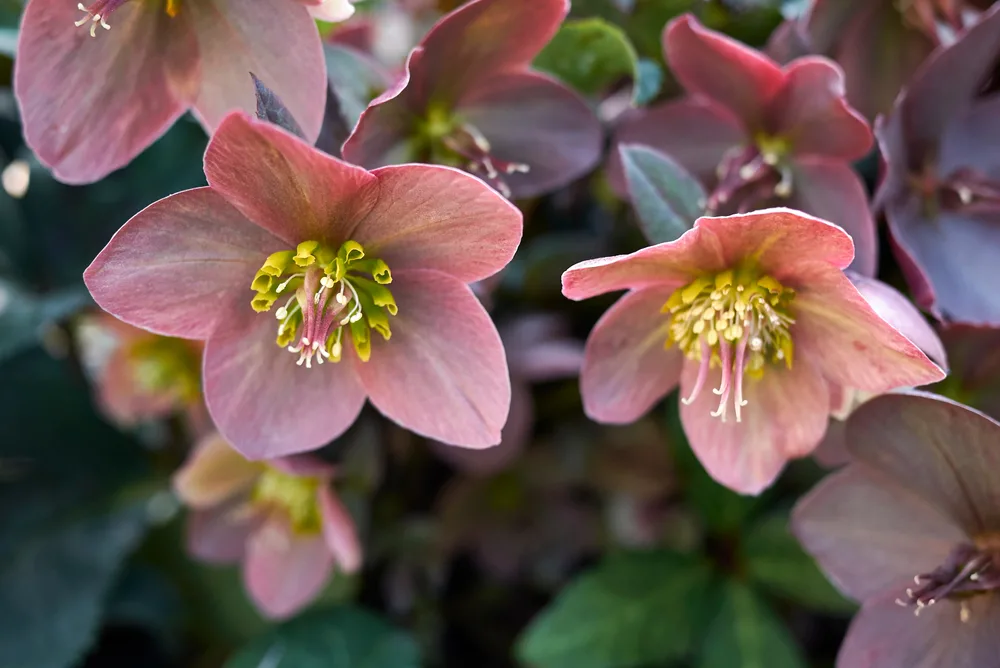
Also known as Lenton rose and winter rose, hellebore is very early bloomer that can perk up the gardens as soon as February and March, even in snow.
Though not a true rose, hellebore produces 3 to 4 inch large rose-like petals surrounding a bevy of yellow stamens. Available in several hues, hellebore flowers stay in bloom for 8 to 10 weeks.
Hardiness zone: 4 to 9
Sun exposure: Part shade to full shade
6. Windflower (Anemone blanda)
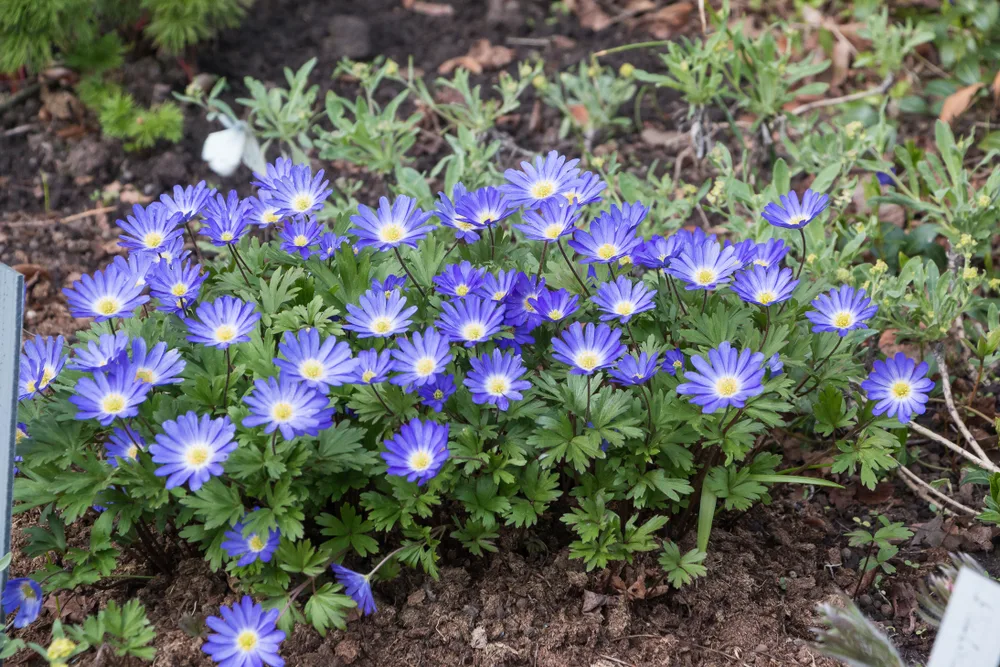
Anemone or windflower is a low grower that spreads through self seeding and tuberous rhizomes.
It can quickly form colonies in your shady and dappled sunlight areas, creating a carpet of deeply lobed green foliage that blooms with daisy-like flowers in blue, white, pink, or purple.
Hardiness zone: 5 to 8
Sun exposure: Full sun to part shade
7. Solomon’s Seal (Polygonatum odoratum)
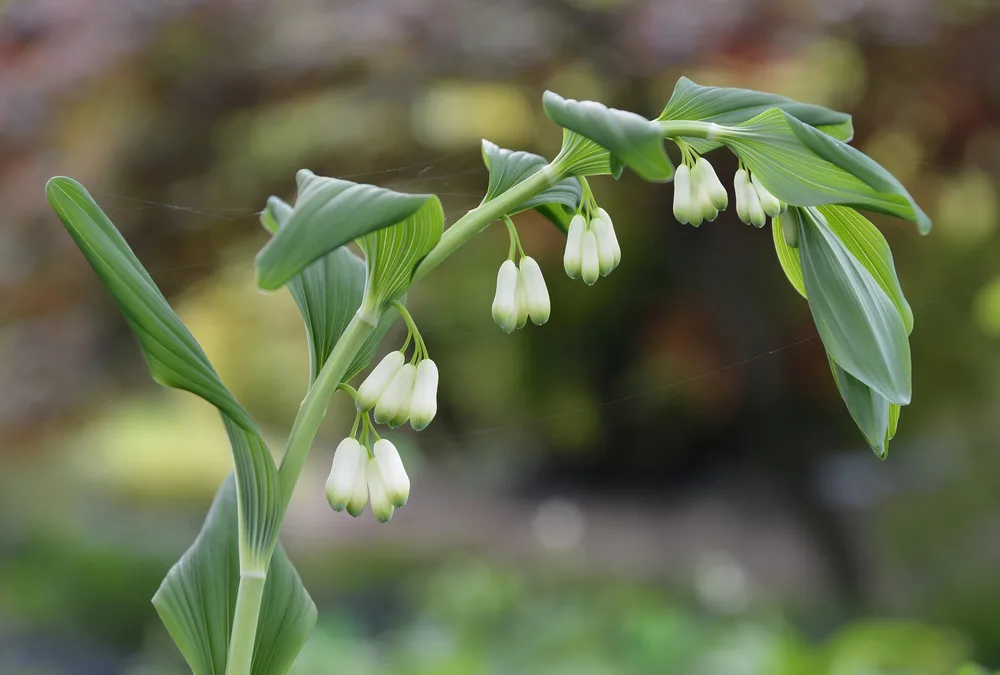
Solomon’s seal is a graceful beauty that sends out long, arching stems dotted with elliptical green leaves each spring. When in bloom, a line of small tubular white flowers dangle below the stem, emitting a sweet, lily like fragrance.
Preferring it cool, moist, and shaded, Solomon’s seal is best planted in sun dappled areas.
Hardiness zone: 3 to 8
Sun exposure: Part shade to full shade
Foliage Plants For Shade
Providing color and texture all season long, don’t forget to add some shade loving foliage plants to your shadowy spots:
8. Coleus (Plectranthus scutellarioides)
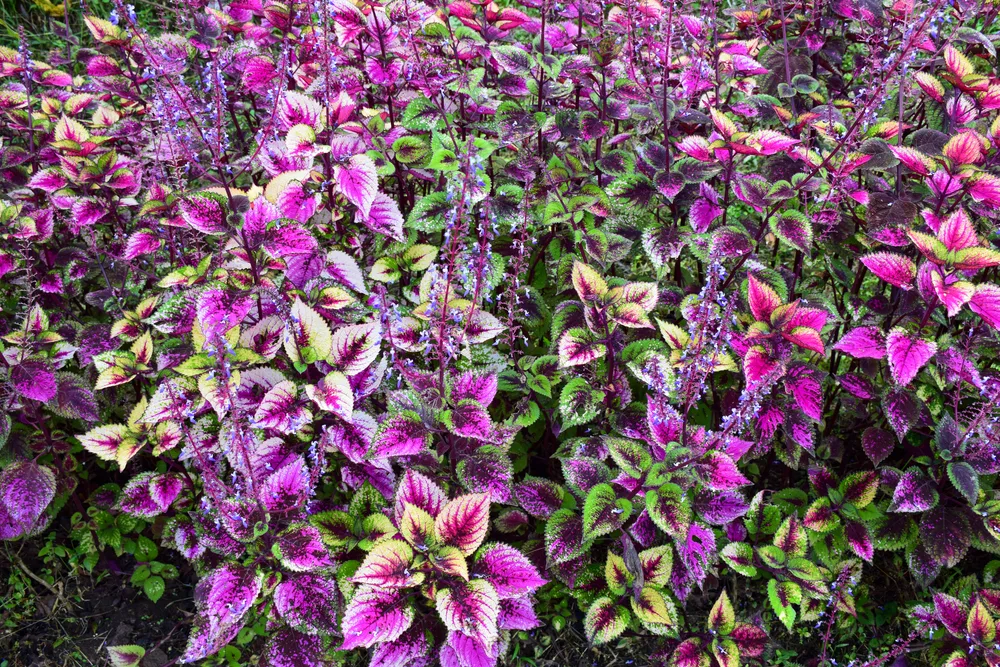
Bred and hybridized since the Victorian era, coleus is available in an array of hues that span every color of the rainbow except true blue.
The vibrant colors of its ovate serrated leaves tend to dull in direct sunlight and so coleus is better suited to darker areas of the garden.
Gardeners who reside in a cooler climate can overwinter coleus by propagating cuttings in water and keeping it indoors as a houseplant to replant the following spring.
Hardiness zone: 10 to 11
Sun exposure: Part shade to full shade
9. Hosta (Hosta spp.)
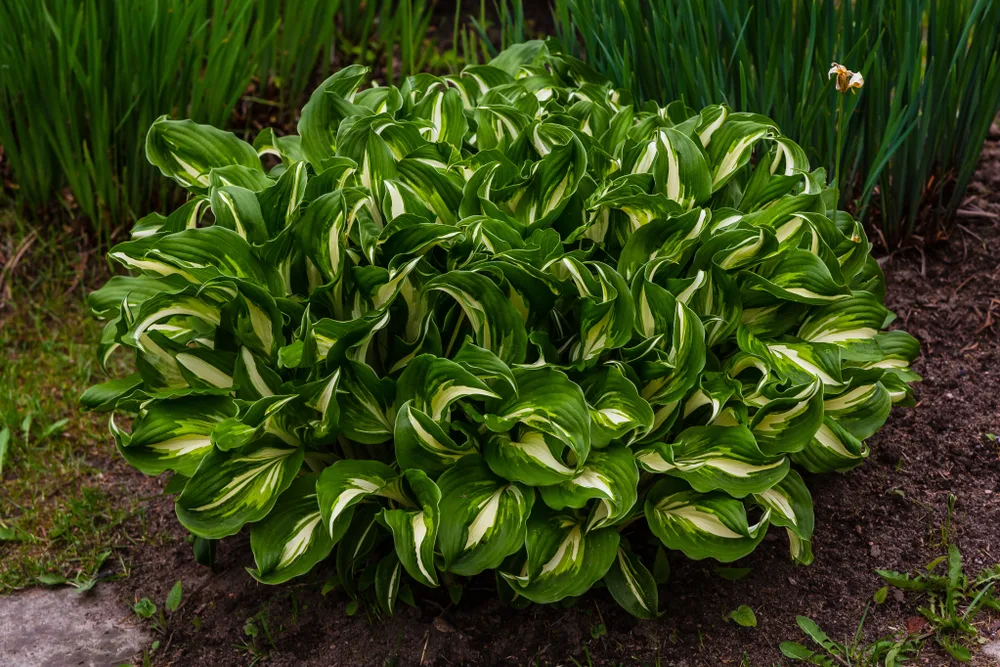
With about 6,000 hosta cultivars to choose from, there’s no shortage of choice in size and color for this shady garden favorite.
Easy to care for and incredibly long lived, hostas feature broad ovate leaves that range in size from 1 inch to a foot across. The foliage may be a single color or a variation of whites, yellows, and greens. Surprisingly, early spring hosta shoots are edible.
Hardiness zone: 3 to 9
Sun exposure: Part shade to full shade
10. Golden Euonymus (Euonymus japonicus ‘Aureo-marginatus’)
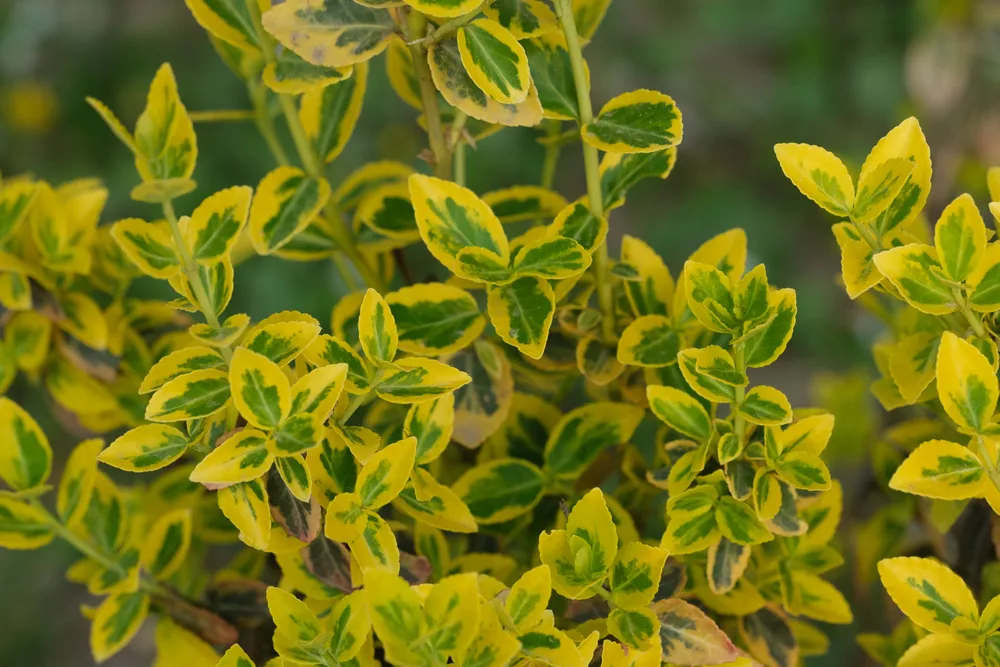
Golden euonymus adds a nice visual contrast with its mostly golden yellow leaves tinged in green in the center.
A woody, vining plant, it can be grown into a shrub, trimmed into a hedge, or trained to grow up a wall.
Hardiness zone: 6 to 9
Sun exposure: Full sun to part shade
11. Heucherella (× Heucherella)
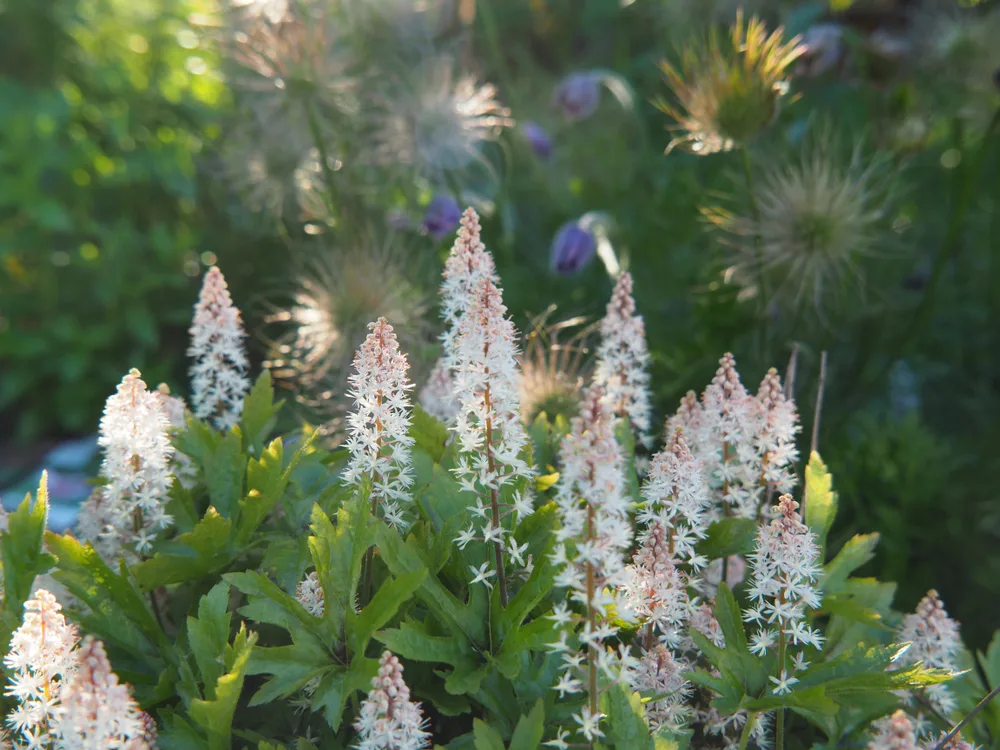
The progeny of Heuchera (coral bells) and Tiarella (foamflower), Heucherella is a compact, mounding plant with deeply lobed leaves with notable veining.
Choose from dozens of cultivars in as many colors and variations, from muted earth tones to dazzling reds, purples, and yellows.
Also known as foamy bells, Heucherella prefers some sun with afternoon shade.
Hardiness zone: 4 to 9
Sun exposure: Full sun to part shade
12. Common Periwinkle (Vinca minor)
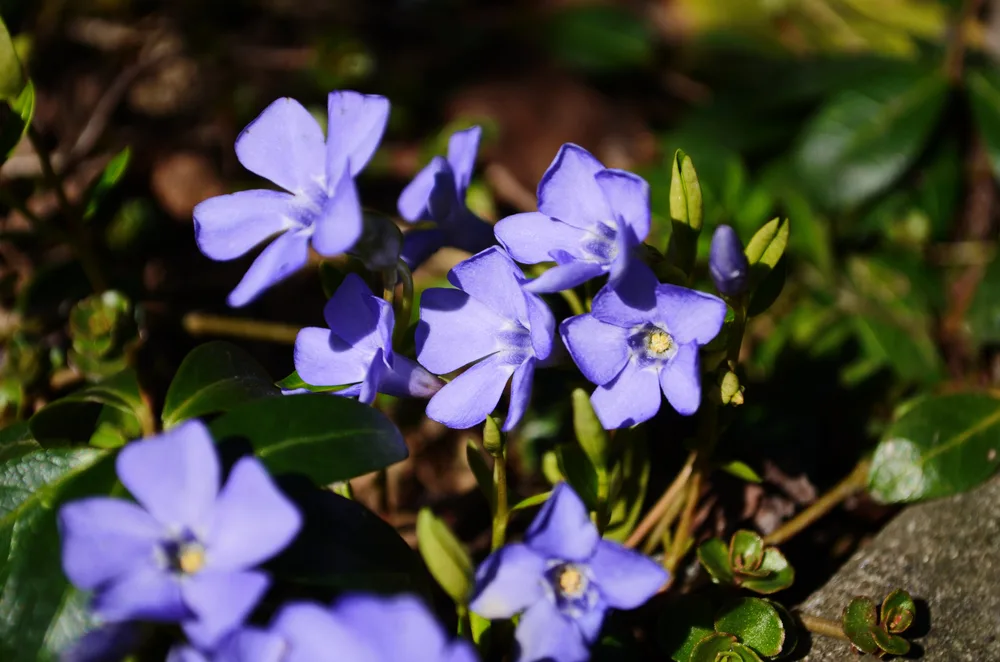
An easygoing groundcover that can handle lots of sun or lots of shade, periwinkle quickly spreads along the soil with its trailing stems adorned with evergreen, glossy, ovate leaves.
It flowers throughout the summer and into autumn too, an intermittent show of bluish purple 5 petal flowers.
Hardiness zone: 4 to 8
Sun Exposure: Full sun to full shade
13. Persian Shield (Strobilanthes dyerianus)
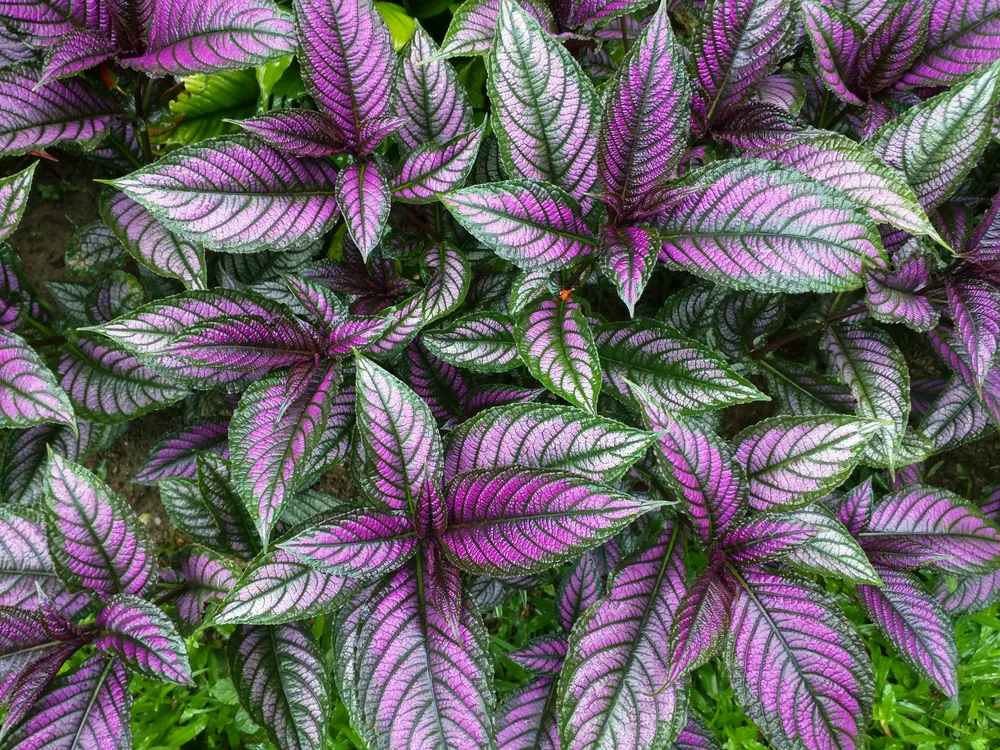
Persian shield will certainly brighten up a gloomy spot in the garden with its vibrant violet colored ovate leaves with distinctive veins that each grow to a length of about 8 inches.
While Persian shield can tolerate full sun, it prefers some shade and will produce the brightest purples when planted in part shade.
Better suited to frost free climates, Persian shield is just too amazing to not be included in this list. It’s easily rooted in water so take cuttings each fall to overwinter indoors and replant each spring.
Hardiness zone: 10 to 11
Sun exposure: Full sun to part shade
Fruits & Vegetables For Shade
Although fruit and veggie plants will be most productive in full sun, there are several cultivars that can tolerate being in the shade part of the day:
14. Asparagus (Asparagus officinalis)
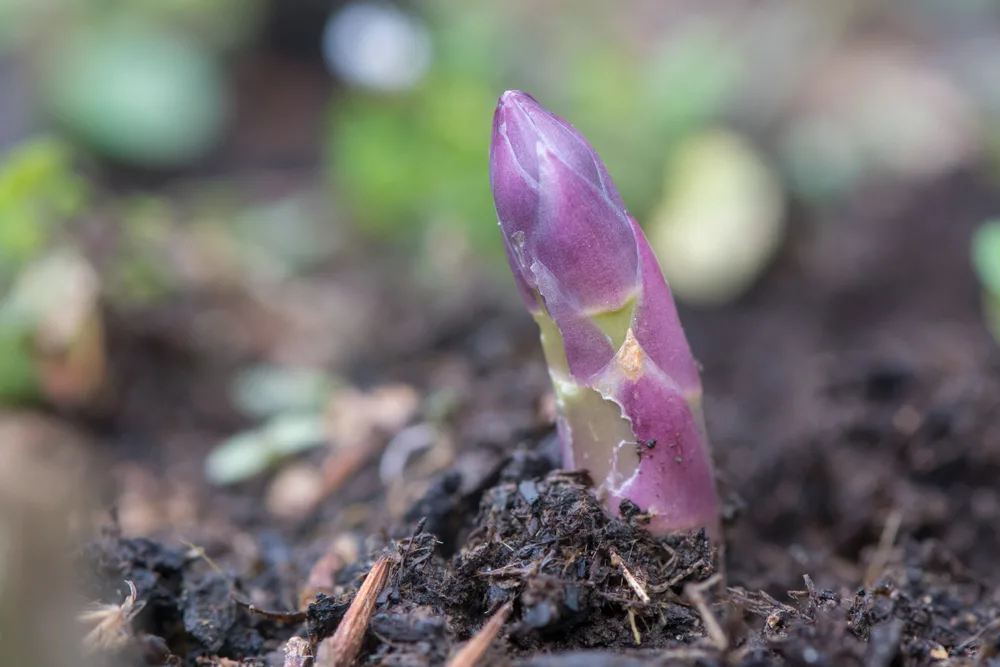
Like most food-bearing perennials, asparagus will take 2 to 3 years of growth before you can take your first harvest. But once it has established, asparagus plants will provide food for many years to come.
Asparagus can tolerate some shade throughout the day. Try to find a spot that receives 6 hours of sunlight for a more productive crop.
Hardiness zone: 4 to 9
Sun exposure: Full sun to part shade
15. Currant (Ribes spp.)
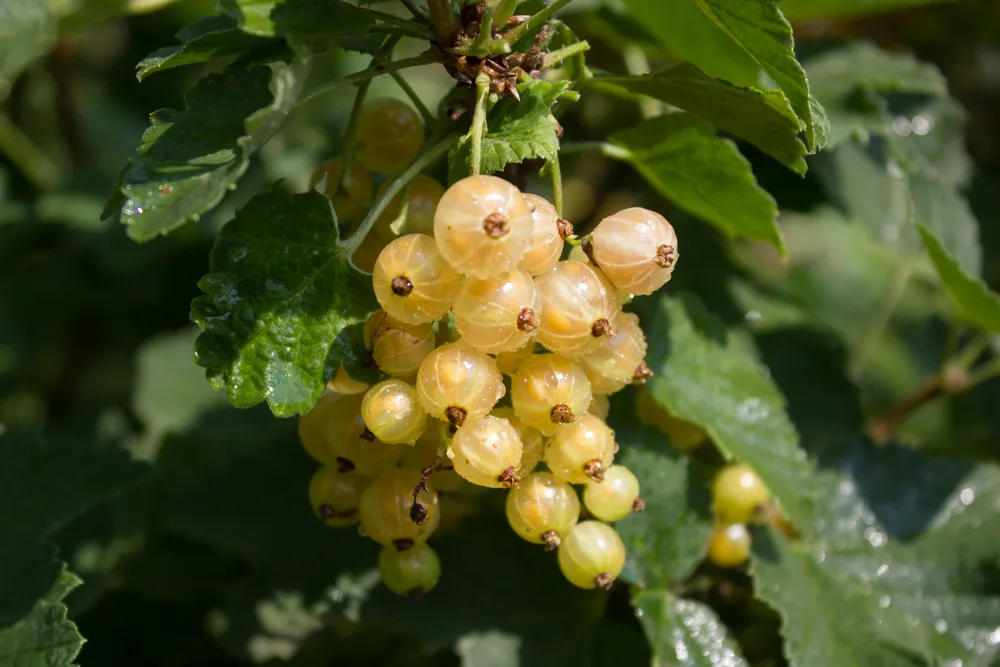
Red, pink, and white currants (Ribes sativum) as well as black currant (Ribes nigrum) are medium sized shrubs that produce strongly flavored berries.
They are sweet enough to be eaten fresh from the shrub, but currants are often reserved for making jams, sauces, and syrups.
A good site to plant currant is a spot that receives morning sun and afternoon shade.
Hardiness zone: 3 to 8
Sun exposure: Full sun to part shade
16. Gooseberry (Ribes grossularia)
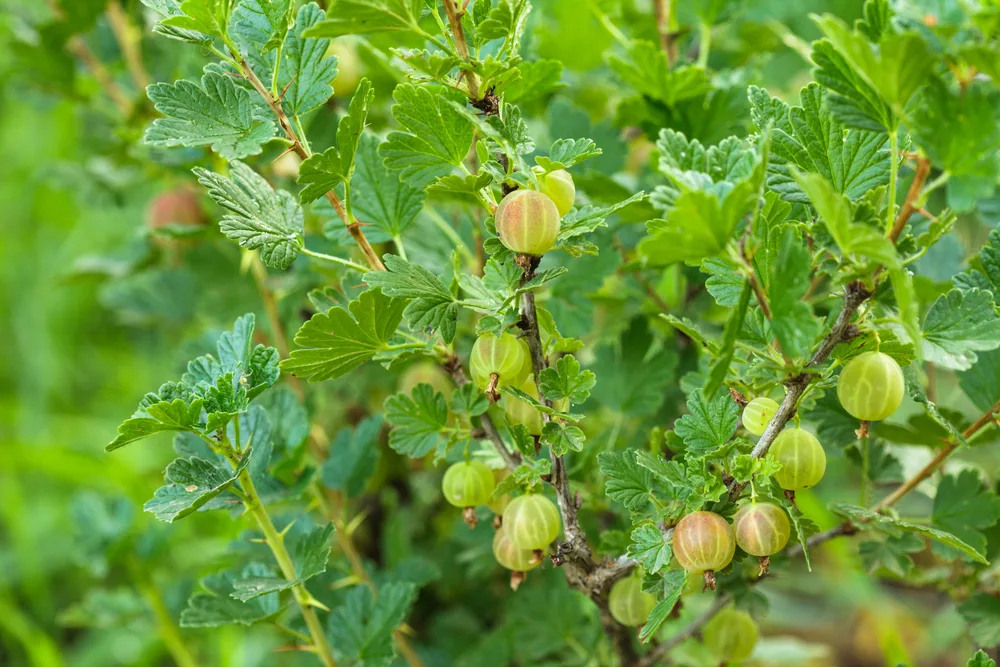
Another member of the Ribes family, gooseberry is a super productive berry bush that bears translucent fruits in green, red, yellow, and white, depending on the specific cultivar. The berries are typically ready to harvest in July.
Sweet and rich in flavor, gooseberries can be enjoyed fresh or prepared into desserts and jams.
Hardiness zone: 3 to 8
Sun exposure: Full sun to part shade
17. Egyptian Walking Onions (Allium cepa var. proliferum)
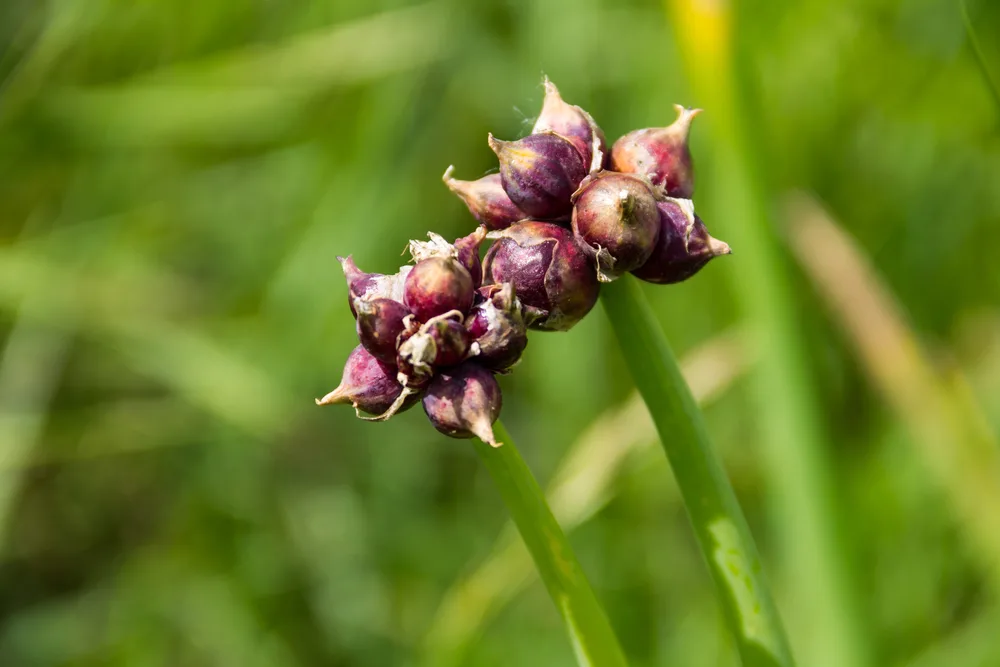
A fascinating adaptation, Egyptian walking onions produce little bulblets at the tops of their stalks (where flowers would normally be), weighing them down so they touch the ground and establish anew.
These onions literally walk across the garden over the years, but can be reined in by replanting the bulbs where you would like them to be.
Hardiness zone: 3 to 9
Sun exposure: Full sun to part shade
18. Garlic (Allium sativum)
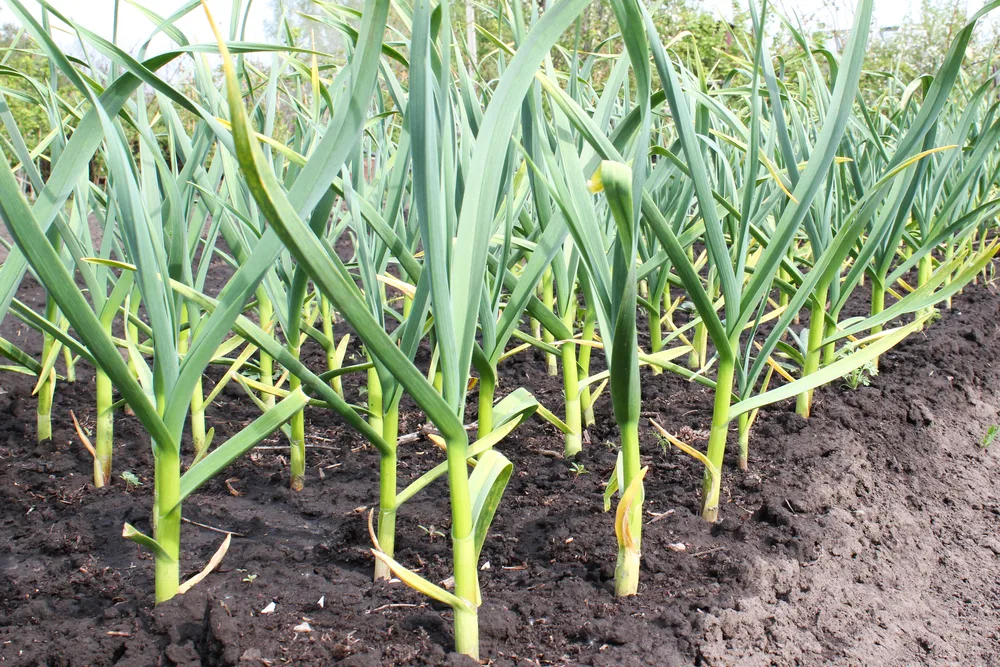
Garlic is usually grown as an annual that requires fresh plantings each autumn for a summer harvest the following season.
Simply leave a few plants in the ground at harvest time and they will return year after year.
To ensure a good garlic bounty each year, select a spot that receives between 4 to 6 hours of sun each day.
Hardiness zone: 2 to 10
Sun exposure: Full sun to part shade
19. Ostrich Fern (Matteuccia struthiopteris)
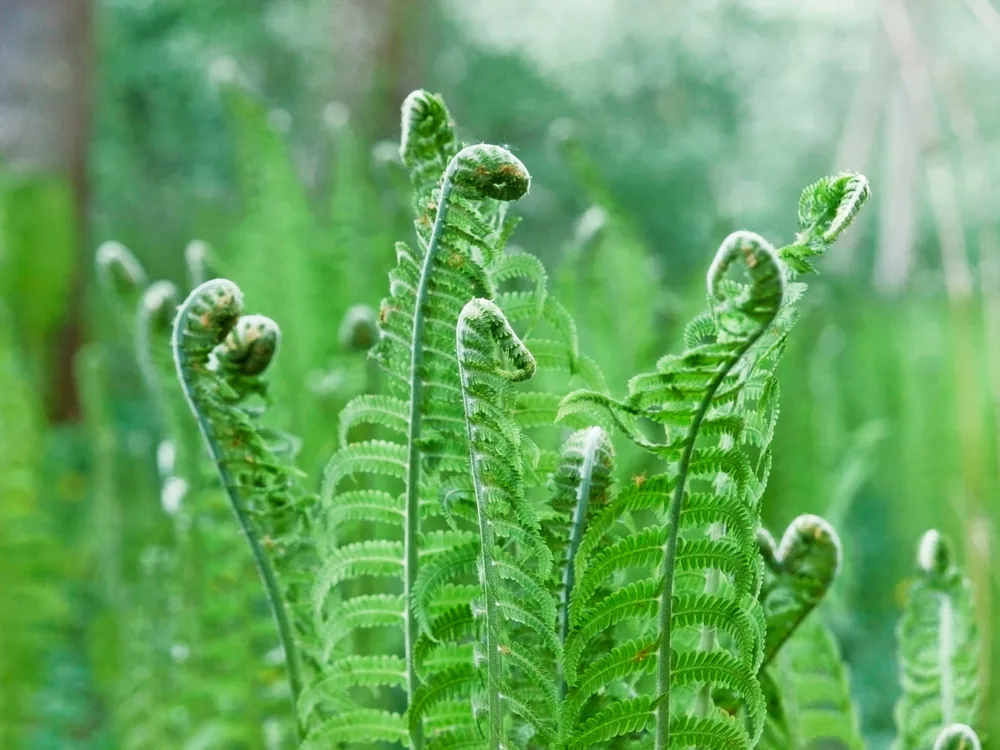
A plant well suited to the darkness, ostrich fern bears feathery fronds that emerge from a crown of rhizomes every spring.
It produces tightly curled fiddleheads that will eventually unfurl and mature into long and broad fronds.
Allow 2 to 3 years for the plant to become established before snipping off some of the small fiddleheads early in the season while they are still tender. These can be boiled, steamed, or sautéed in butter for a tasty and nutritious side dish.
Hardiness zone: 3 to 7
Sun exposure: Part shade to full shade
20. Wild Leeks (Allium tricoccum)
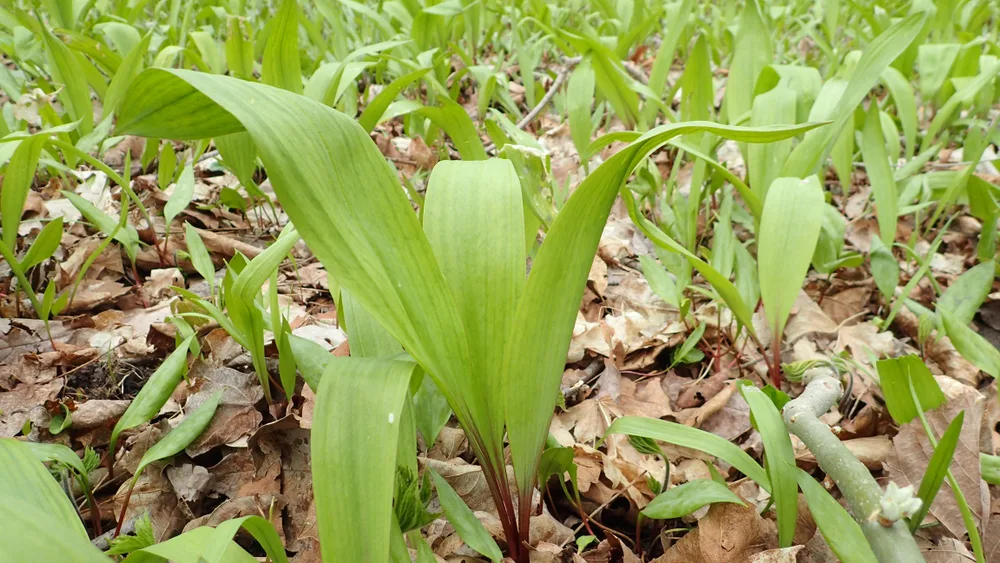
Wild leeks, also known as ramps, are a spring vegetable native to the woodland forests of eastern North America.
With a flavor that combines spring onions and garlic, wild leeks leaves emerge from an underground bulb in very early spring and die back in summer. A flower stalk blooms just as the leaves are fading to disperse seeds for the next season.
All parts of the wild leek plant are edible. Be sure to harvest early in the season before the plant dies back and once a good sized colony has been established. The leaves, stems, and bulbs can be enjoyed fresh or chopped up and used as a flavoring in cooking.
Hardiness zone: 4 to 7
Sun exposure: Part shade to full shade
Herbs For Shade
Easygoing and aromatic, these herbs have it made in the shade:
21. Mint (Mentha spp.)
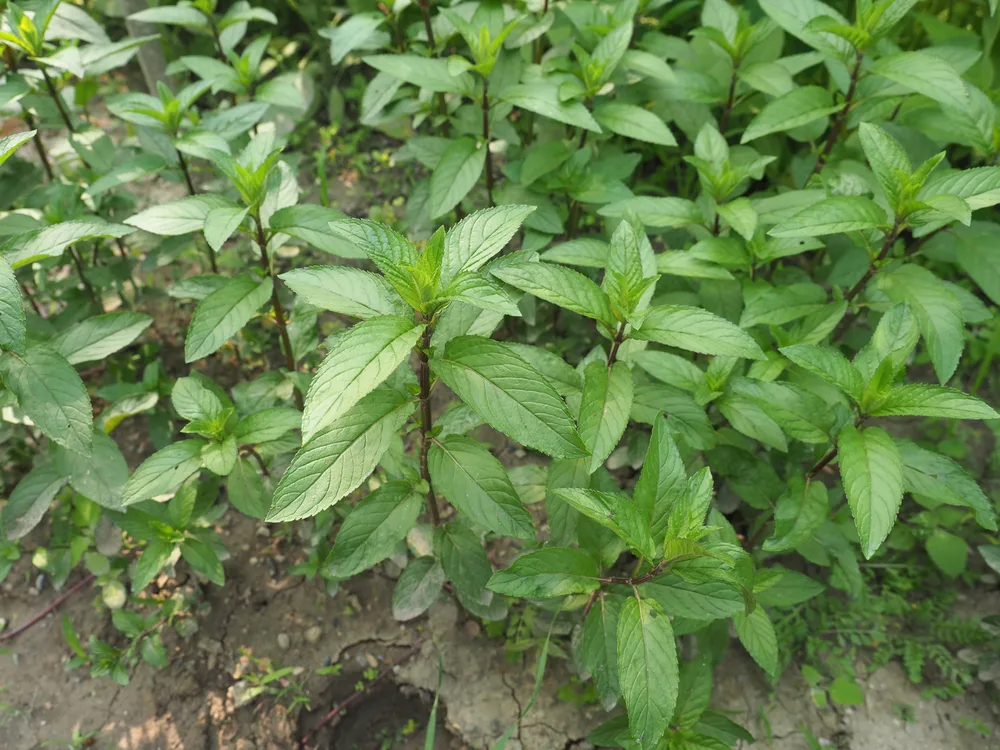
Mint is an excellent choice for your damp and shady spots.
A hardy and non-fussy herb, mint grows quickly, likes wet feet, and can easily adapt to lower light conditions.
Stick with classic spearmint or peppermint, or try one of the 25 cultivars and hybrids available, such as chocolate mint, apple mint, and lavender mint.
Hardiness zone: 5 to 9
Sun exposure: Full sun to part shade
22. Chives (Allium schoenoprasum)
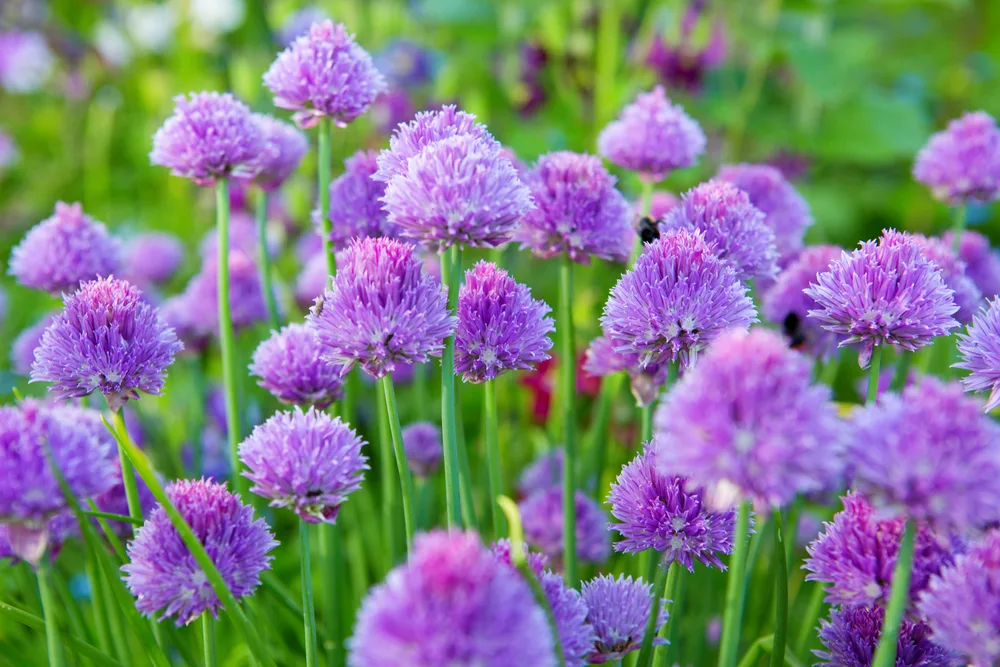
Providing garlicky shoots that can be harvested throughout the growing season, chives form attractive grass-like clumps about a foot tall.
Chives bloom with pretty purple globe shaped flowers later in summer. Remove blooms as they appear to prevent the plant from going to seed, or allow a few to flower to encourage spread.
Hardiness zone: 4 to 8
Sun exposure: Full sun to part shade
23. Lovage (Levisticum officinale)
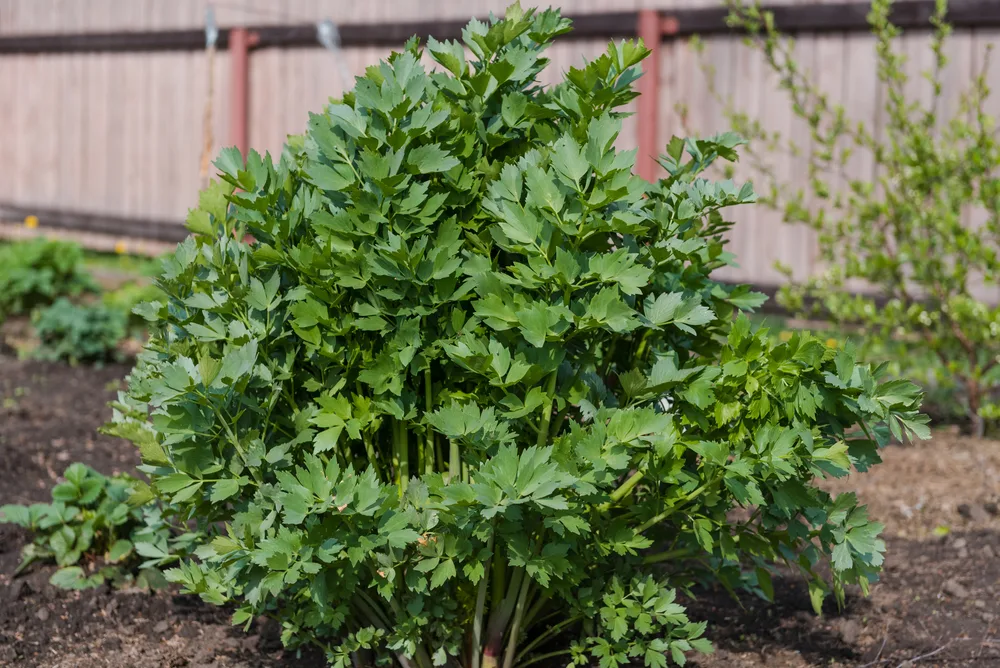
Lovage is a tall and bushy herb that can reach a height of more than six feet.
Looming large in the herbal garden, give lovage plenty of room to grow and it will reward you amply.
All parts of the lovage plant are edible. Harvest the leaves, stems, roots, and seeds for a flavor reminiscent of celery.
Hardiness zone: 4 to 8
Sun exposure: Full sun to part shade
24. Lemon Balm (Melissa officinalis)
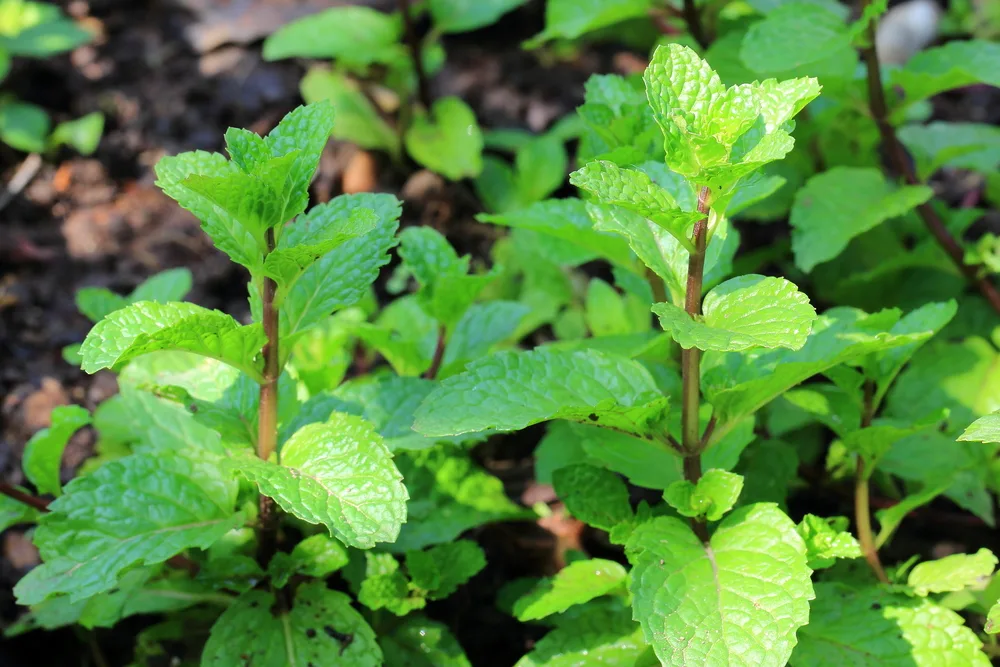
A favorite of honeybees and other pollinators, lemon balm has wrinkly, ovate leaves that emit a wonderful citrusy scent in the garden.
Freshly grown leaves have the best fragrance so you will want to prune it regularly to encourage new growth. Use this harvest for making salads, soups, sauces, tea, and potpourri. Here are more brilliant ways to use lemon balm leaves.
Hardiness zone: 3 to 7
Sun exposure: Full sun to part shade
25. Thyme (Thymus vulgaris)
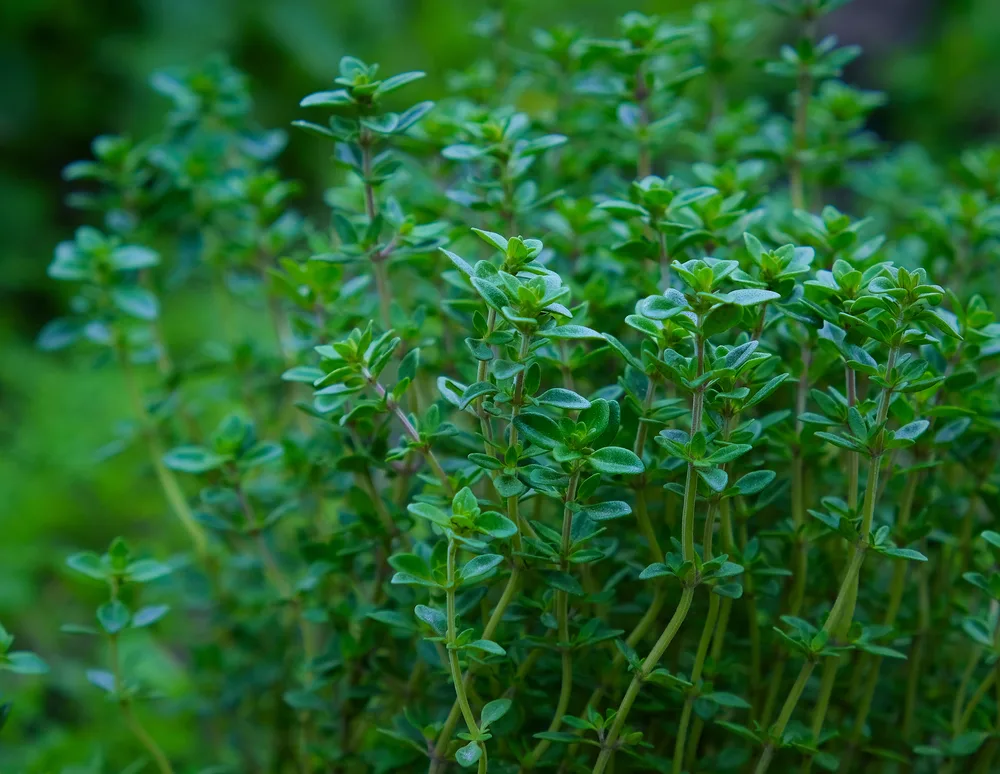
Thyme is an upright, woody herb with tiny, pointed, grey-green leaves that run up the length of the stem. It is highly aromatic and will fill the garden with its distinctive savory aroma throughout the season.
The best tasting sprigs are taken just before it blooms with masses of stunning pale purple or pink flowers.
Hardiness zone: 5 to 9
Sun exposure: Full sun to part shade

Get the famous Rural Sprout newsletter delivered to your inbox.
Including Sunday musings from our editor, Tracey, as well as “What’s Up Wednesday” our roundup of what’s in season and new article updates and alerts.


